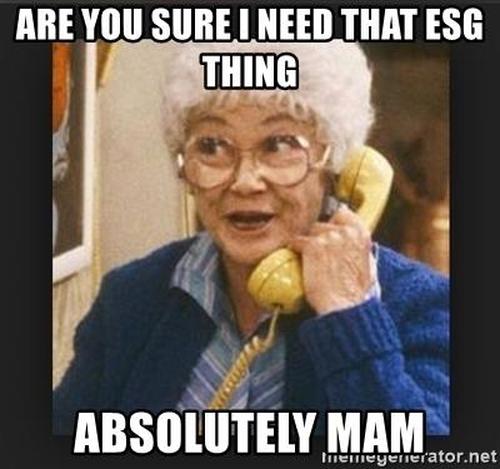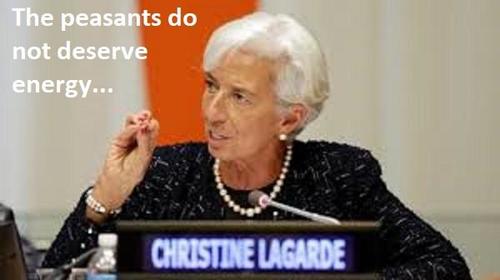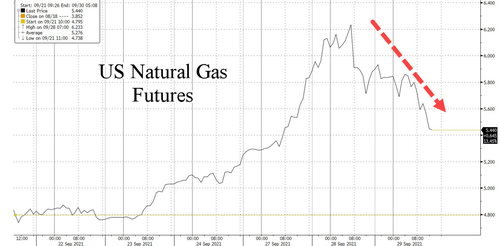I blogged about the underlying case last week; the defendant had accused plaintiff (with whom plaintiff had been romantically involved in the past) of having “sexually assaulted [defendant’s daughter] some years prior at age 12.” Plaintiff sued for libel, and defendant didn’t defend the case, so the Magistrate Judge recommended that the District Court enter an $80,000 default judgment.
But the Magistrate Judge also recommended that the court “enjoin Defendant from further publishing the same or similar statements about Plaintiff that are the subject of this matter.” I’ve written about anti-libel injunctions, so I’m planning on filing the following friend-of-the-court brief on my own behalf. Here’s a draft (not yet cite-checked or proofread); I’d love to hear what others think about it.
[* * *]
Summary of Argument
[1.] Under Erie, this Court should not issue an injunction unless state law authorizes it. Lord & Taylor, LLC v. White Flint, LP, 780 F.3d 211 (4th Cir. 2015); Kramer v. Thompson, 947 F.2d 666, 676 (3d Cir. 1991). And West Virginia law appears to forbid anti-libel injunctions. Kwass v. Kersey, 81 S.E.2d 237, 245 (W. Va. 1954).
[2.] If this Court nonetheless believes that West Virginia law does not bar such an anti-libel injunction, the First Amendment would not bar it, either, if the junction is properly narrowed and provides sufficient procedural protections to the defendant.
[I.] West Virginia law, which should be applied here under Erie, appears to forbid anti-libel injunctions
“Erie doctrine requires courts to apply state substantive law to a request for permanent injunctive relief in diversity cases.” Lord & Taylor, LLC v. White Flint, LP, 780 F.3d 211 (4th Cir. 2015). “Allowing different remedies in state law cases heard in federal courts on pendent jurisdiction would undermine the ‘twin aims of the Erie rule: discouragement of forum-shopping and avoidance of inequitable administration of the laws.'” LaShawn A. by Moore v. Barry, 144 F.3d 847, 853 (D.C. Cir. 1998) (quoting Hanna v. Plumer, 380 U.S. 460, 468 (1965)). (The matter is uncertain in some circuits, see, e.g., Peterson v. Bell Helicopter Textron, Inc., 806 F.3d 335, 341 n.7 (5th Cir. 2015) (so noting), but this Circuit’s view appears to be set forth by Lord & Taylor.) See also Kramer v. Thompson, 947 F.2d 666, 676 (3d Cir. 1991) (expressing sympathy for injunctions in First Amendment cases, but concluding that Pennsylvania law forbids such injunctions, and thus reversing such an injunction).
And West Virginia law appears to forbid anti-libel injunctions. Kwass v. Kersey, 81 S.E.2d 237, 245 (W. Va. 1954), observed that “we have found no authority in the United States which holds that mere defamation can be enjoined,” and therefore reversed an anti-libel injunction. Roberts v. Stevens Clinic Hosp., Inc., 345 S.E.2d 791, 808 (W. Va. 1986), cited Kwass favorably, albeit in a non-libel case, for the broad proposition that the West Virginia Constitution preserves traditionally recognized rights to trial by jury.
[II.] If an injunction is available, it should be framed narrowly, and with adequate procedural safeguards
To be sure, the modern trend in most states is in favor of allowing anti-libel injunctions following a judgment on the merits that certain speech is libelous and therefore constitutionally unprotected; thirty-four states appear to allow such injunctions, and only six, including West Virginia, forbid them. Eugene Volokh, Anti-Libel Injunctions, 168 U. Pa. L. Rev. 73, 77, 137-46 (2019), http://www.law.ucla.edu/volokh/libelinj.pdf. Properly limited, such injunctions should be seen as consistent with the First Amendment. See id. at 105-17; for Fourth Circuit cases so holding, see Brennan v. Stevenson, Civ. No. JKB-15-2931, 2015 WL 7454109, at *5 (D. Md. Nov. 24, 2015) (dictum) (taking the view that an anti-libel injunction would be a permissible injunction against “unprotected speech,” and thus consistent with the First Amendment); Maye v. Worrell, No. 13-cv00510, 2013 WL 5545077, at *3 (M.D.N.C. Oct. 8, 2013) (issuing anti-libel injunction and rejecting First Amendment objection).
Perhaps, then, Kwass should no longer be relied on, given its stress on the distinction between law and equity, see, e.g., 81 S.E.2d at 243-46—a distinction abolished in West Virginia in 1960, State ex rel. AmerisourceBergen Drug Corp. v. Moats, 859 S.E.2d 374, 383 (W. Va. 2021). Indeed, in Delaware, which still maintains a sharp law/equity distinction, the Court of Chancery held that Delaware’s chancery courts generally lack jurisdiction over libel cases in the first instance, but expressly left open the possibility that, once the law court concludes—after a jury trial, if the parties opt for it—that a statement is libelous, an injunction could then be issued. Organovo Holdings, Inc. v. Dimitrov, 162 A.3d 102, 122, 124-26 & n.105 (Del. Ch. 2017). This Court may therefore choose to certify to the West Virginia Supreme Court of Appeals (see W. Va. Code § 51-1A-3) the question whether anti-libel injunctions remain forbidden under West Virginia law.
And if this Court concludes that (1) certification is unnecessary, (2) under the modern view anti-libel injunctions are permitted, and (3) an injunction is called for in this case, it ought to make sure that the injunction is crafted sufficiently narrowly, and with the proper procedural safeguards.
[A.] The injunction should not include the vague term “similar statements”
First, the proposed injunction would ban defendant from making “the same or similar statements about Plaintiff that are the subject of this matter,” Report & Rec. at 8. The “similar statements” reference is unduly vague, see McCarthy v. Fuller, 810 F.3d 456, 461 (7th Cir. 2015):
The injunction’s preamble, moreover, greatly expanded the scope of the injunction by prohibiting “any similar statements [that is, similar to the injunction’s specific prohibitions] that contain the same sorts of allegations or inferences, in any manner or forum,” as those listed in the body of the injunction. That expansion was improper. An injunction must be specific about the acts that it prohibits. Fed.R.Civ.P. 65(d)(1). How could such vague terms as “similar” and “same sorts” provide guidance to the scope of the injunction?
It would be better for the injunction to instead say something like, “the Court enjoins Defendant from libelously stating that Defendant had a sexual relationship with her daughter when she was a minor, or had sexually assaulted her daughter” (if the Court concludes that the falsity of those statements has been adequately demonstrated).
[B.] The injunction should provide procedural protections that are at least as strong as those provided by constitutionally valid criminal libel laws
Second, an anti-libel injunction is like a tiny criminal libel law, just for this defendant as to these statements about this plaintiff: The injunction would make it a crime for McLaughlin to say certain libelous things about Knight, on pain of prosecution for criminal contempt. Narrowly written criminal libel laws, which adhere to First Amendment rules, are constitutionally permissible: Civil and criminal libel cases “are subject to the same constitutional limitations.” Herbert v. Lando, 441 U.S. 153, 157 & n.1 (1979); Garrison v. Louisiana, 379 U.S. 64, 67 (1964) (taking the same view as Herbert); In re Gronowicz, 764 F.2d 983, 988 & n.4 (3d Cir. 1985) (en banc) (likewise); Phelps v. Hamilton, 59 F.3d 1058, 1073 (10th Cir. 1995) (upholding a narrowly drawn criminal libel statute); People v. Ryan, 806 P.2d 935, 941 (Colo. 1991) (likewise, as to speech on matters of purely private concern). But, to be constitutional, an injunction ought to maintain at least those procedural protections that are offered by criminal libel law.
Before speakers are jailed for speech under a criminal libel law,
- Their statements must be found to have been false when the statements were made.
- This finding of falsehood must be based on proof beyond a reasonable doubt.
- This finding must be made by a jury—a Sixth Amendment requirement in those states where the criminal libel statute authorizes more than six months in jail,[1] but also a state law requirement in all the other states (except Louisiana) that authorize jail time for criminal libel.[2]
- This finding must be made after a trial in which an indigent defendant is entitled to a court-appointed defense lawyer, who can argue that the statements were true, opinion, privileged, or otherwise not libelous.
But when a speaker is prosecuted for criminal contempt for violating an anti-libel injunction, these protections are absent. Even if the defendant has a court-appointed lawyer (available if the defendant is facing the risk of jail) and the case is tried before a jury, the jury must only find beyond a reasonable doubt that the defendant said what the injunction forbade. The jury is not asked to decide beyond a reasonable doubt that the statement was false, and the court-appointed lawyer cannot argue to the jury that the statement was actually true.
This is an especially serious problem for defendants who could not afford a lawyer when the injunction was first sought. Because injunction proceedings are civil cases, these defendants would not be entitled to a court-appointed lawyer. They might therefore have been unable to effectively argue that the statement was true, or privileged. If they lost at trial, they would find it very hard to effectively appeal. Indeed, they might have felt so hamstrung by the lack of a lawyer that they might not have contested the injunctions in the first place. The injunctions may also have been entered far from where they lived, making it even harder for them to effectively litigate the case. And when a defendant is absent, unrepresented, or practically unable to appeal, there will often be reason to doubt the accuracy of the factfinding at the initial civil injunction hearing.
This might be an unavoidable reality as far as the civil justice system is concerned. Defendants who lack the resources to defend themselves may find themselves subject to civil judgments.
But when courts issue injunctions against libel, they turn that reality into something with criminal law consequences: Defendants might be threatened with jail for repeating statements without ever having had lawyers who could effectively argue that the statements were not actually libelous.
Moreover, injunctions against false statements risk forbidding true statements as well. First, a statement may be libelous in one context, but hyperbole in another. See, e.g., Greenbelt Coop. Pub. Ass’n v. Bresler, 398 U.S. 6, 13-14 (1970) (so holding as to allegations that a developer was engaged in “blackmail”). Yet an injunction simply barring repetition of a statement will prohibit the statement regardless of context.
Second, “[u]ntrue statements may later become true; unprivileged statements may later become privileged.” Kinney v. Barnes, 443 S.W.3d 87, 98 (Tex. 2014) (giving this as a reason to reject anti-libel injunctions). An injunction might, for instance, bar a defendant from accusing plaintiff of sexual assault, because the court concludes that the plaintiff has not indeed committed sexual assault. But say the plaintiff does later commit such an assault: The injunction will still remain, and will still forbid the watchdog from repeating the specified statement.
True, a defendant could go to court to modify the injunction, see Balboa Island Vill. Inn, 40 Cal.4th 1141, 1161, 156 P.3d 339, 353 (Cal. 2007), but that is expensive and time-consuming. Or a defendant could ask the court to exercise its discretion not to initiate criminal contempt proceedings in light of the changed facts, see, e.g., Brandt v. Gooding, 636 F.3d 124, 135 (4th Cir. 2011), but the judge may of course not agree that the facts have changed, or may think that in any event the defendant should have complied with the injunction. And, more generally, speakers should not have to “request the trial court’s permission to speak truthfully in order to avoid being held in contempt,” Kinney, 443 S.W.3d at 98.
In these respects, a criminal contempt prosecution for violating an anti-libel injunction is much like pre-Revolutionary libel prosecutions, such as in the notorious John Peter Zenger trial: The judge decides whether a statement is libelous, and then the criminal jury decides only whether the defendant had published the statement. See, e.g., Kramer, 947 F.2d at 672 n.15.
American law roundly rejected this approach for criminal libel, even when criminal libel prosecutions were common, and instead insisted that the criminal jury must determine whether the statement was indeed false. E.g., Montee v. Commonwealth, 26 Ky. 132, 151 (1830) (denouncing the older English approach—leaving the jury to only decide the fact of publication—as “odious” and “subversive of personal security”). The law should likewise take the same approach to anti-libel injunctions, given that they are enforced through criminal prosecution. See Willing v. Mazzocone, 482 Pa. 377, 384, 393 A.2d 1155, 1159 (Pa. 1978) (Roberts, J., concurring) (“One of the underlying justifications for equity’s traditional refusal to enjoin defamatory speech is that . . . [an injunction] deprives appellant of her right to a jury trial on the issue of . . . truth or falsity . . . .”); Organovo Holdings, Inc. v. Dimitrov, 162 A.3d 102, 124-25 (Del. Ct. Ch. 2017) (refusing to enjoin libel because of the “longstanding preference for juries addressing defamation claims”).
There is, fortunately, a simple revision that can allow anti-libel injunctions to provide the procedural protections necessary for criminalizing speech:
- The injunction should not simply ban specific statements (e.g., “Defendant shall not state X about the plaintiff”) but should also expressly include the libelous nature of the statements as an element of the forbidden behavior (e.g., “Defendant shall not libelously state X about the plaintiff”).
- The injunction should expressly provide that any criminal contempt prosecutions should be conducted with a jury (unless the defendant waives the jury trial at the time of the criminal contempt hearing).
- The injunction should provide that it cannot be enforced through the threat of jail for civil contempt; this is needed to enforce the principle that speakers can only be jailed for their speech if the full protections of the criminal law are provided. Kramer, 947 F.2d at 668-69 (describing the trial judge’s use of civil contempt proceeding to jail the libel defendant until he wrote a confession and apology).
Because the revised injunction would ban only libelous statements, the defendant could not be punished unless the plaintiff or the prosecutor, in the criminal contempt proceeding, shows that the statement is libelous. (For extra clarity, the injunction might so state expressly.) This means:
- Before the defendant is criminally punished, the statement will have to be proved libelous beyond a reasonable doubt.
- The defendant will have a court-appointed lawyer (at least if there is a risk of jail time) who can effectively argue about whether the statement is indeed libelous.
- The finding that the statements were indeed false will have to be made by a criminal jury, if the defendant so wishes.
- If the facts or context have changed, and the statements are no longer false or are not libelous in context, the defendant would be entitled to acquittal.
To be sure, this would make criminal contempt hearings more time-consuming, and more expensive for plaintiffs (who would likely assist the prosecutor) and for the court system. But that is a necessary consequence of the procedures required to protect speech.
And the extra expense need not be great. While the findings in the civil case would of course not have collateral estoppel effect on the criminal case, the evidence and argument assembled for the civil case could be reused with a minimum of extra discovery and investigation.
Of course, the injunctions would continue to powerfully deter speakers. Only rare speakers would continue speaking after a court has found (albeit by a preponderance of the evidence) that their speech is false, and specifically ordered them—on pain of criminal punishment—to stop. (Criminal libel law would have the same effect, once a speaker gets a warning from a prosecutor.) But if a few speakers do think that they can prevail at a criminal contempt trial, they should be entitled to the customary protections provided by the criminal justice process.
Conclusion
West Virginia precedent appears to forbid anti-libel injunctions; this suggests that, under Erie, this Court should not issue such an injunction here. But if this Court concludes that this precedent is no longer sound, an injunction may well be consistent with the First Amendment, if it is framed something like this:
- The Court enjoins Defendant from falsely stating that Defendant had a sexual relationship with her daughter when she was a minor, or had sexually assaulted her daughter.
- Any criminal contempt prosecutions for violating this injunction shall be tried by jury.
- The defendant may not be jailed for civil contempt for violating this injunction.
[1] See Kan. Stat. Ann. §§ 21-6103, 21-6602 (2017 Supp.)); Minn. Stat. Ann. § 609.765 (2016); N.M. Stat. Ann. §§ 30-1-6, 30-11-1 (2004); N.D. Cent. Code §§ 12.1-15-01 (2012), 12.1-32-01 (2012 & 2017 Supp.); Wisc. Stat. Ann. §§ 939.51, 942.01 (2015-16).
[2] See, e.g., Idaho Crim. R. 23(b) (right to jury trial for all misdemeanors); Mich. Ct. R. 6.401 (likewise); N.C. Gen. Stat. § 15A-1201 (2017) (likewise); Okla. Const. art. II, § 22 (jury in criminal libel cases); Utah Const. art. I, § 15 (likewise). New Hampshire criminal libel law does not authorize jail time. N.H. Rev. Stat. Ann. §§ 644:11 (2016), 651:2(III) (2016 & 2017 Supp.).
from Latest – Reason.com https://ift.tt/3ok93ii
via IFTTT










